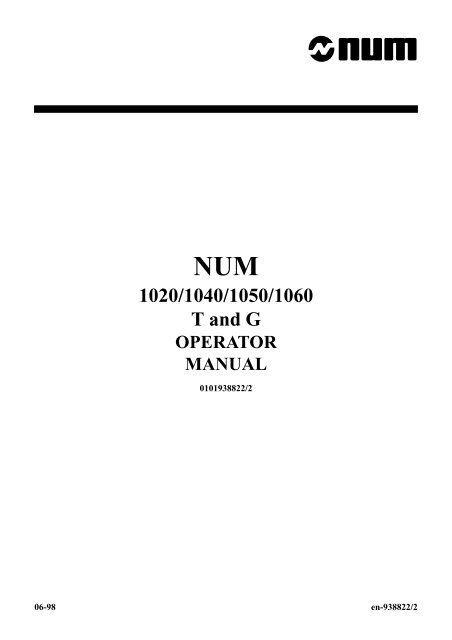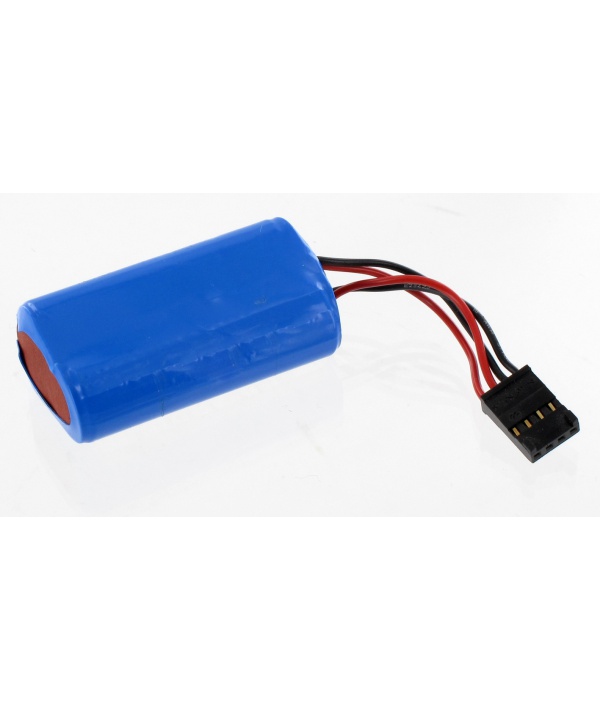Kent Industrial USA, Inc. 1231 Edinger Avenue Tustin CA 92780 USA 1.800.KENT.USA +1.714.258.8526. NUM 1020/1040 INSTALLATION AND COMMISSIONING MANUAL /2-E1 2en-938938/2-E1 Despite the care taken in the preparation of this document, NUM cannot guarantee the accuracy of the information it contains an d cannot be held responsible for any errors therein, nor for any damage which might result from the use or application of the document. Manual V3.0.1 20171211 Appearance. The input basket can be filled with the number of revolutions. The highest value of this. A:1020 G28P3XYZA.

NUM 1020/1040/1060T G Code list for cnc machinists who work on cnc lathe machines with NUM cnc controls.
NUM 1020/1040/1060T G Codes
| G Code | Description |
|---|---|
| G00 | High-speed linear interpolation |
| G01 | Linear interpolation at programmed feed rate |
| G02 | Clockwise circular interpolation at programmed feed rate |
| G03 | Counterclockwise circular interpolation at programmed feed rate |
| G04 | Programmable dwell |
| G05 | Movement on an inclined axis |
| G06 | Spline curve execution command |
| G07 | Initial tool positioning before machining on an inclined axis |
| G09 | Accurate stop at end of block before going to next block |
| G10 | Interruptible block |
| G12 | Overspeed by handwheel |
| G16 | Definition of tool axis orientation with addresses P, R |
| G20 | Programming in polar coordinates (X, Z, C) |
| G21 | Programming in cartesian coordinates (X, Y, Z) |
| G22 | Programming in cylindrical coordinates (X, Y, Z) |
| G23 | Circular interpolation defined by three points |
| G33 | Constant lead thread cutting |
| G38 | Sequenced thread cutting |
| G40 | Tool radius offset (cutter compensation) cancel |
| G41 | Left tool radius offset (cutter compensation) |
| G42 | Right tool radius offset (cutter compensation) |
| G48 | Spline curve definition |
| G49 | Spline curve deletion |
| G51 | Mirroring |
| G52 | Programming of movements in absoluted dimensions with reference to the measurement origin |
| G53 | DAT1 and DAT2 offset cancel |
| G54 | DAT1 and DAT2 offset enable |
| G59 | Programme origin offset |
| G63 | Roughing cycle with groove |
| G64 | Turn/Face roughing cycle |
| G65 | Groove roughing cycle |
| G66 | Plunging cycle |
| G70 | Inch data input |
| G71 | Metric data input |
| G73 | Scaling factor cancel |
| G74 | Scaling factor enable |
| G75 | Emergency retraction subroutine declaration |
| G76 | Transfer of the current values of «L» and «E» parameters into the part programme |
| G76+/- | ISO programme or block creation/deletion |
| G77 | Unconditional branch to a subroutine or block sequence with return |
| G77 -i | Call of a subroutine return block |
| G78 | Axis group synchronisation |
| G79 | Conditional or unconditional jump to a sequence without return |
| G79 +/- | Temporary suspension of next block preparation in a sequence with movements |
| G80 | Canned cycle cancel |
| G81 | Centre drilling cycle |
| G82 | Counterboring cycle |
| G83 | Peck drilling cycle |
| G84 | Tapping cycle |
| G84 | Rigid tapping cycle |
| G85 | Boring cycle |
| G87 | Drilling cycle with chip breaking |
| G89 | Boring cycle with dwell at hole bottom |
| G90 | Programming in absolute dimensions with respect to the programme origin |
| G91 | Programming in incremental dimensions with respect to the start of the block |
| G92 | Programme origin preset |
| G92 R. | Programming of the tangential feed rate |
| G92 S. | Spindle speed limiting |
| G94 | Feed rate expressed in millimetres, inches or degrees per minute |
| G95 | Feed rate expressed in millimetres or inches per revolution |
| G96 | Constant surface speed expressed in metres per minute |
| G97 | Spindle speed expressed in revolutions per minute |
| G98 | Definition of the start X for interpolation on the C axis |
| G997 | Enabling and execution of all the functions stored in state G999 |
| G998 | Enabling of execution of the blocks and part of the functions processed in state G999 |
| G999 | Suspension of execution and forcing of block concatenation |
Blog Archive
All right. More CNC machine basics here. Today, we’re discussing the various modes of operation your CNC machine can use.
Let’s get right to it:
Manual Mode

Note that this differs from Manual Data Input (MDI) mode. In manual mode, your CNC machine acts like a standard machine. You can operate it just like you would any other machine that doesn’t use programming. You can push buttons, turn wheels, and turn switches on or off. Magic bullet cosmo 2.


The difference between manual mode and manual data input mode is that with MDI, you can do certain things that you can’t in manual mode. More on that in a second.
Manual Data Input Mode (Also Called MDI or MDA Mode)
Aia rig animation mentor download. In this mode, you can do some programming and data entry. However, everything you enter will only be done once. If you need all the functions done again, you’ll have to program them again.
The advantage of this mode is that you can do manual operations that simply cannot be done in manual mode. Some CNC machines, for example, don’t have manual controls to change the spindle speed.
Single Block Mode
Each CNC program is made of blocks. They may be numbered something like N20, N30, and N40. When you enter this mode, just a single block of code executes. Additionally, this means your CNC machine only stops moving on its access. For example, the machine spindle keeps turning, and coolant continues to flow too.
Num 1020 Cnc Manual Pdf
Edit Mode
Just as it sounds, you can enter programs in your CNC machine’s memory, or you can modify current programs. Programs are usually organized by number, and you can make the program you want active.
You can also insert new info into the program, alter its current info, or delete info from it. Some, but not all, CNC programs allow you to cut, paste, find, and replace data just like you would in word processing software.
Automatic Mode/Program Operation Mode
Num 1020 Cnc Manual Software
Again, no surprises here. In this mode, you get to find out how well you did with creating your program. So, take a deep breath, and execute yours. Crack password protected vba project unviewable vba link. Most CNC machines allow you to see the commands executed as they happen. So, if you notice a mistake, you will be able to easily identify where it is in your program.
Those are your basic modes of operation. Feelin’ ready? Awesome. Time to give your CNC machine a try!